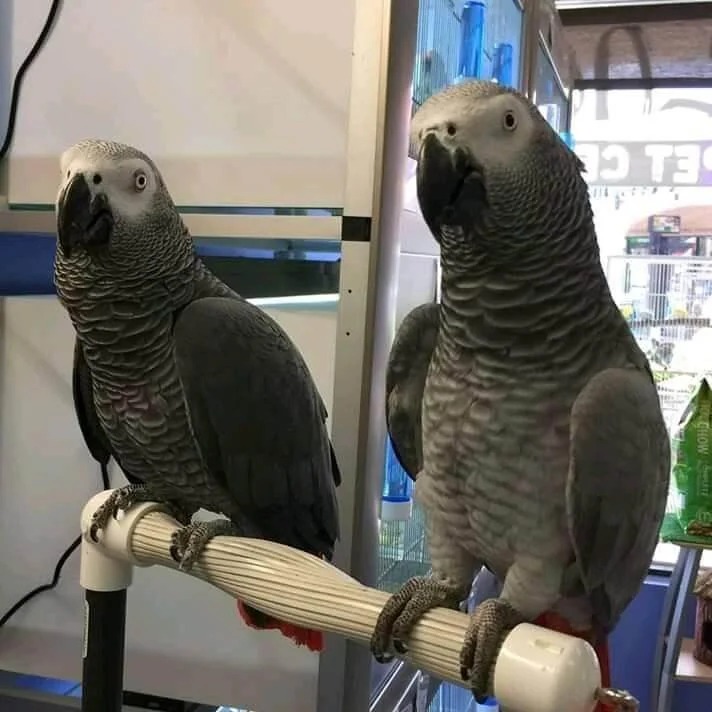African Grey Parrots are renowned not only for their striking appearance but also for their remarkable vocal abilities. These intelligent birds, native to the rainforests of West and Central Africa, are often regarded as one of the best talkers among avian species. Their vocalizations can range from mimicking human speech to producing various sounds that convey emotions and states of mind. This article dives into the different types of noises made by African Grey Parrots, their meanings, and how to interpret these vocalizations effectively.

The Spectrum of Noises Made by African Grey Parrots
African Grey Parrots have a rich repertoire of sounds which include:

Mimicked Speech: These parrots are exceptional mimics, often capable of reproducing human words and phrases with astonishing clarity.
Contextual Sounds: Apart from mimicking speech, African Greys also make noises that reflect their mood or environment. These can include sounds of laughter, barking dogs, or any other noises they frequently hear.
Contact Calls: In the wild, these birds use contact calls to communicate their location to one another. In a domestic environment, they might use similar calls to express a sense of loneliness or desire for interaction.
Warning or Distress Calls: When threatened or scared, African Grey Parrots often emit sharp, loud calls that serve to alert other birds or their human companions.
Playful Sounds: When happy or engaged, these parrots might make playful chattering noises or whistles, indicating contentment and excitement.
Table 1: Types of Sounds Made by African Grey Parrots
| Type of Noise | Description | Context/Meaning |
|---|---|---|
| Mimicked Speech | Clear reproduction of human speech | Interaction with humans |
| Contextual Sounds | Sounds mimicking everyday occurrences | Reflects environment and mood |
| Contact Calls | Repeated sounds to communicate location | Signals loneliness or need for companionship |
| Warning Calls | Sharp, loud calls to alert of danger | Indicators of fear or perceived threat |
| Playful Sounds | Light chattering or whistling | Indicates happiness, playfulness, and engagement |
Decoding the Noises
To better grasp the significance of the various sounds made by African Grey Parrots, it is essential to understand their context. Here are some pointers to help interpret their vocalizations:
Emotional State: Understanding the emotional state of the bird can assist in interpreting its sounds. For instance, if a parrot is squawking loudly, it might be feeling threatened, bored, or seeking attention.
Frequency and Volume: The loudness and frequency of the noise can indicate urgency. A sudden loud call is often a warning, while softer sounds may be expressions of comfort or contentment.
Consistency with Behavior: Observing the bird's behavior while it vocalizes is critical. A parrot squealing and flapping its wings may be more a sign of playfulness compared to a parrot sitting quietly while making soft sounds, indicating calmness.
Mimicry Cues: Mimicking human speech with particular inflections can convey specific messages. For instance, if an African Grey frequently imitates a phrase associated with mealtime, it could signal hunger or anticipation.
Benefits of Understanding Parrot Vocalizations
Grasping the meaning behind an African Grey Parrot's noises can have multiple advantages, including:
Enhanced Bonding: The more a pet owner understands their African Grey, the stronger the bond made through effective communication.
Addressing Emotional Needs: Knowing what different sounds mean can help owners address their birds' emotional states, potentially averting stressful situations.
Improved Welfare: Recognizing signs of distress or happiness can lead to better overall care for the bird, ensuring its well-being.
Training Opportunities: Understanding vocalizations can provide insights into training; recognizing phrases the bird mimics can reinforce desired behaviors through positive reinforcement.
Frequently Asked Questions (FAQs)
1. Do all African Grey Parrots learn to talk?
While many African Grey Parrots are capable of mimicking human speech, not all will. Each bird's personality and environment can influence its willingness to communicate verbally.
2. What are some common words African Grey Parrots learn?
Common words include greetings like "hello," commands like "step up," or phrases related to mealtime, such as "want a treat."
3. How can I encourage my African Grey to talk?
Encouraging your parrot to talk involves consistent interaction, positive reinforcement, and repeating words or phrases in context. Additionally, avoiding overly noisy environments will help them become comfortable vocalizing.
4. Are the noises made by african Grey parrot Noises Grey Parrots harmful to their health?
Generally, vocalizations are part of a parrot's natural behavior; however, excessive loud calling—especially when it indicates distress—can indicate underlying issues. Monitoring for changes in vocalization and addressing any signs of discomfort or health concerns is crucial.
5. What should I do if my parrot is not vocalizing at all?
If an African Grey is silent, it might simply be its nature or a sign of stress. Closely observing behavior for changes, creating a stimulating environment, and consulting with an avian vet if silence persists is advisable.
The vocalizations of African Grey Parrots are a fascinating aspect of their unique personality and intelligence. Understanding the various noises they make can enhance the relationship between the bird and their human companions, ensuring a fulfilling and harmonious living environment. Whether it's joyful chattering or a critical warning call, each sound is a vital part of their communicative repertoire, meriting attention and care from their owners. By listening closely, one can truly appreciate the rich emotional life of these remarkable parrots.










